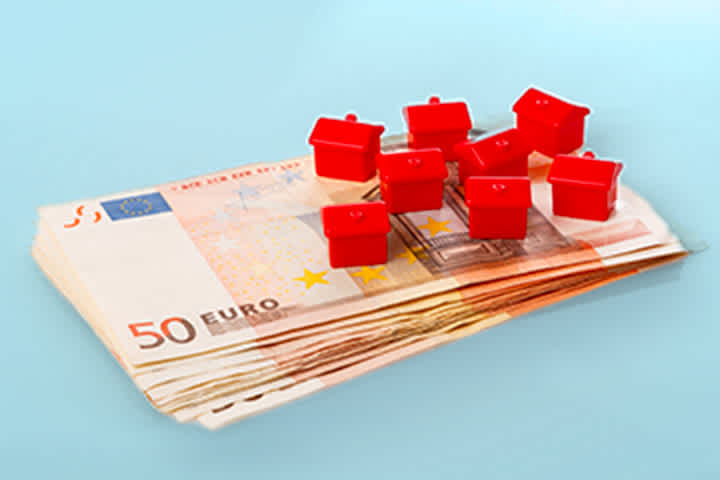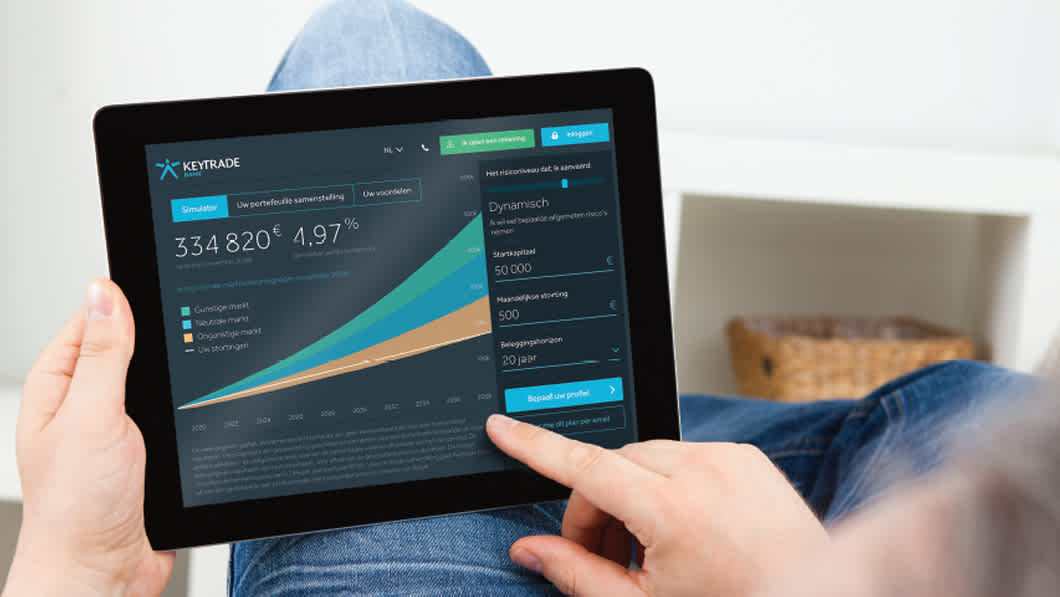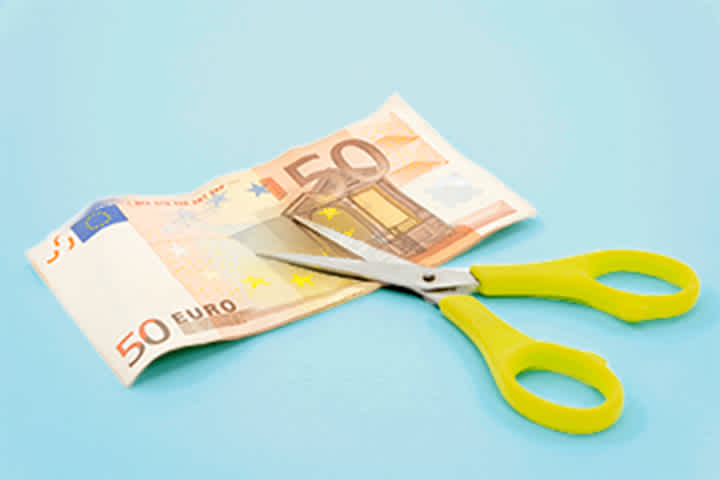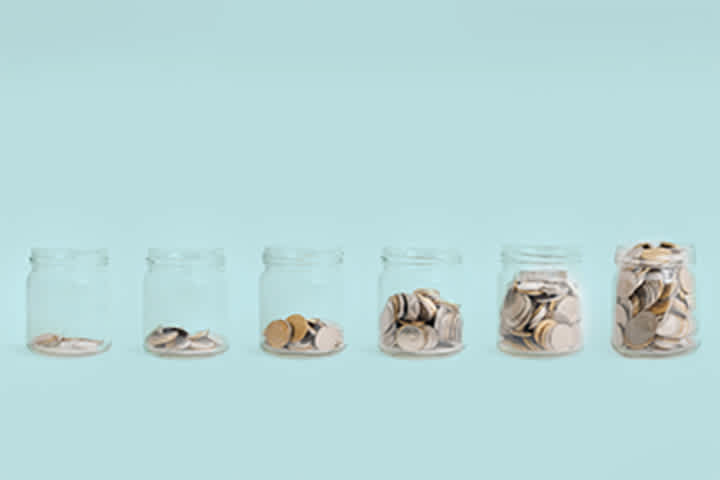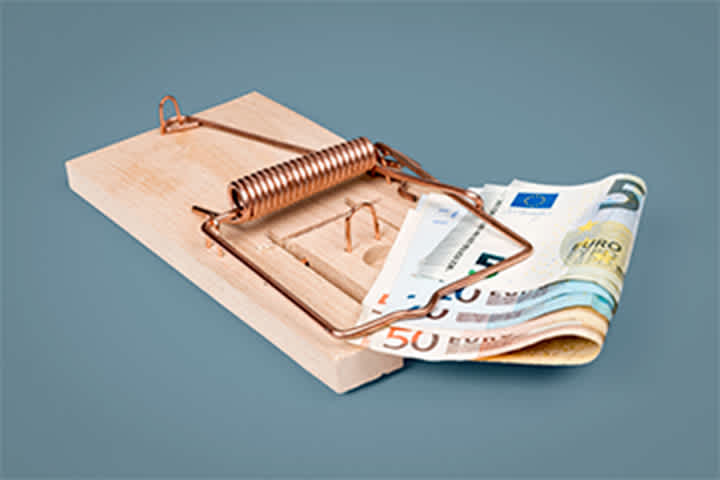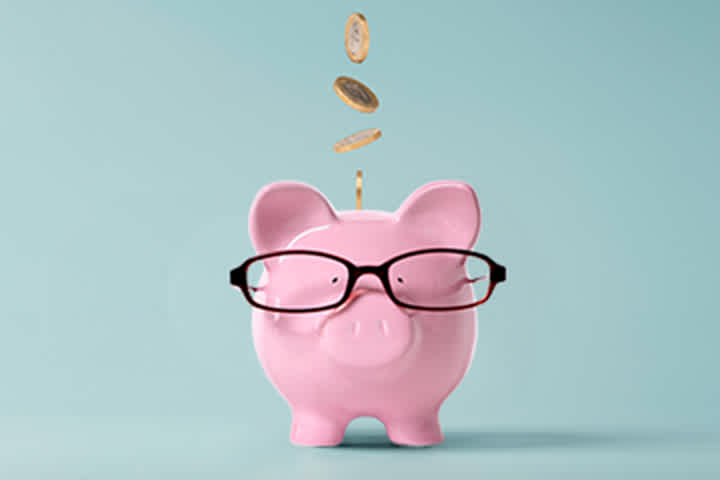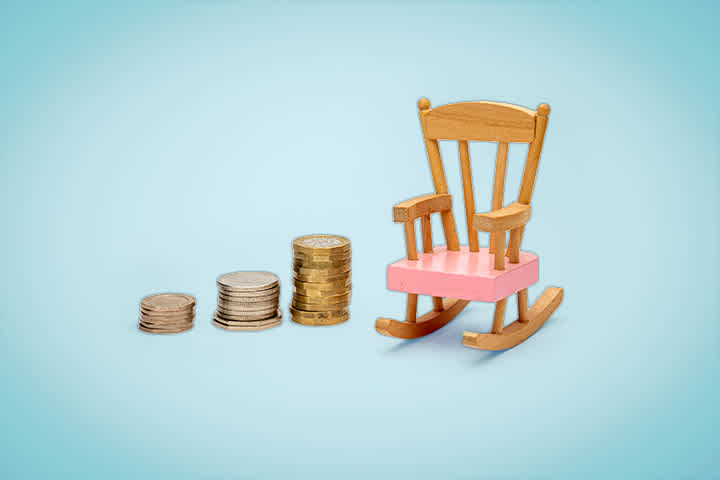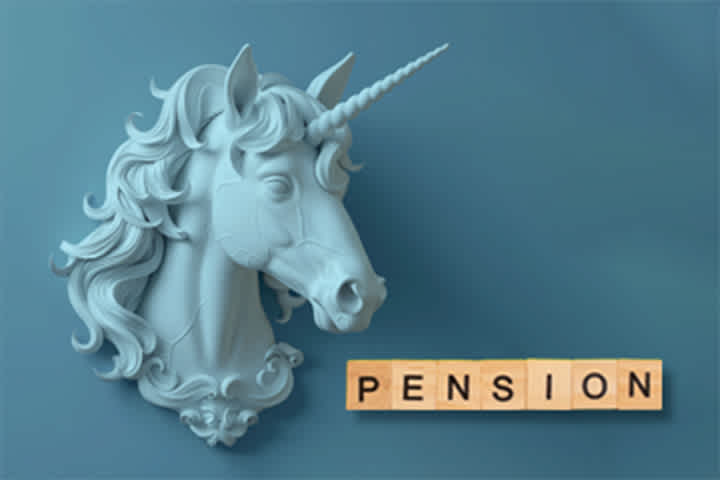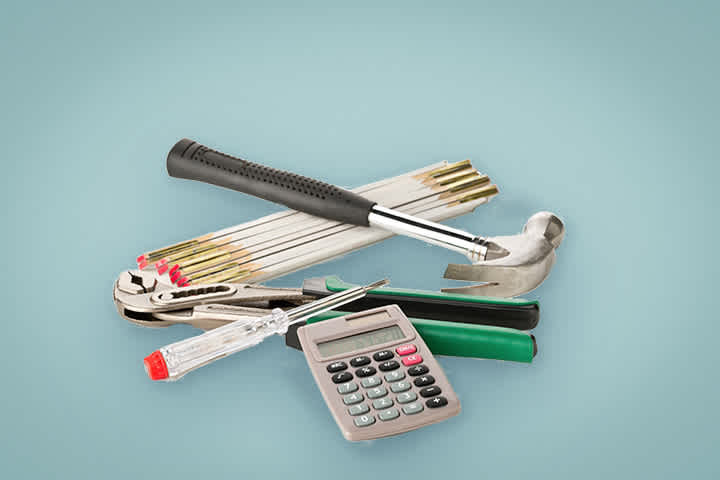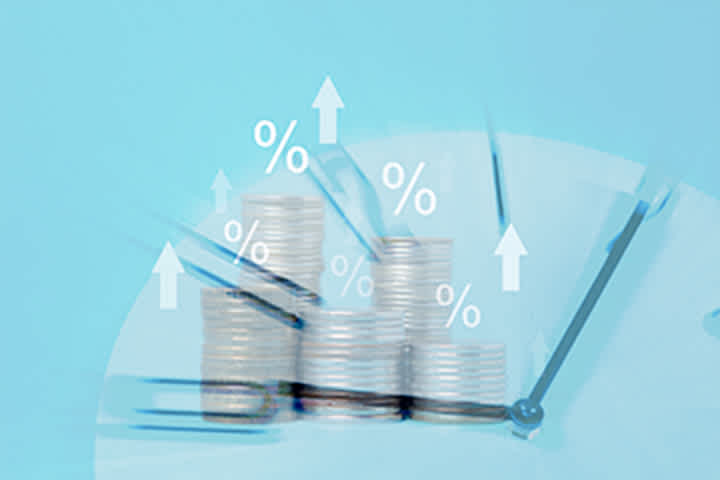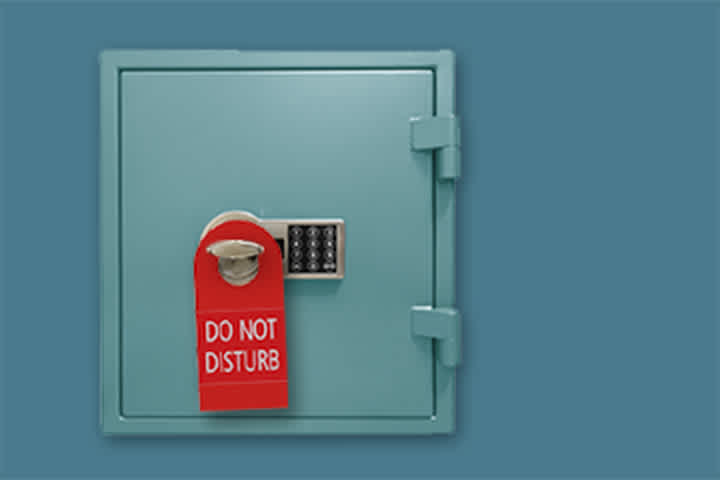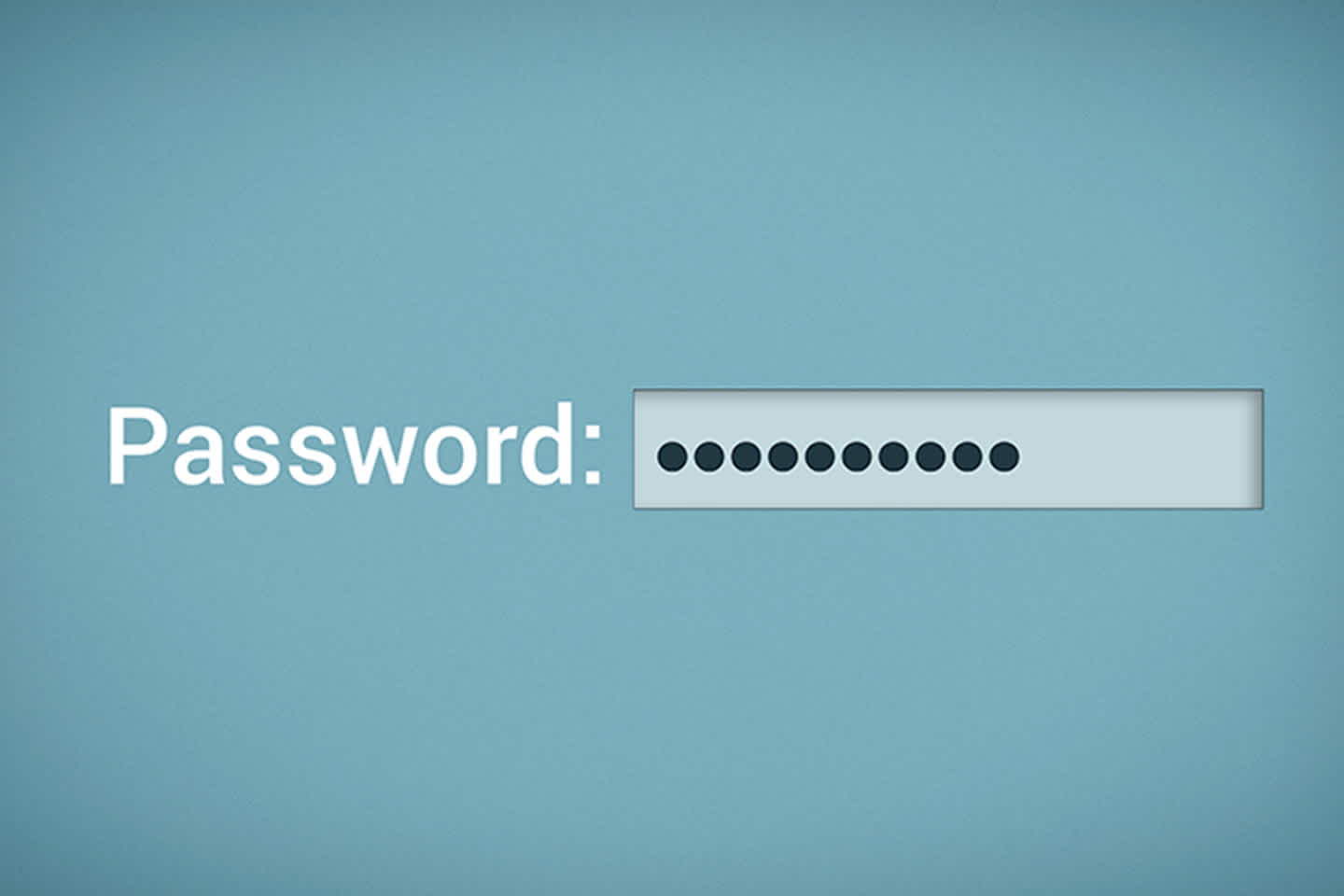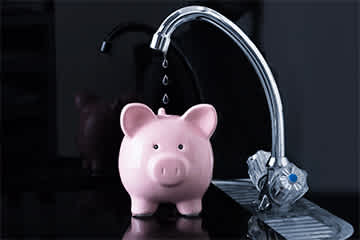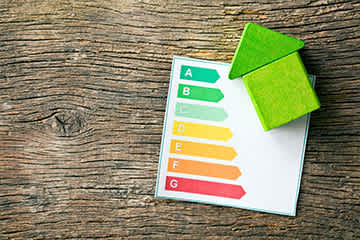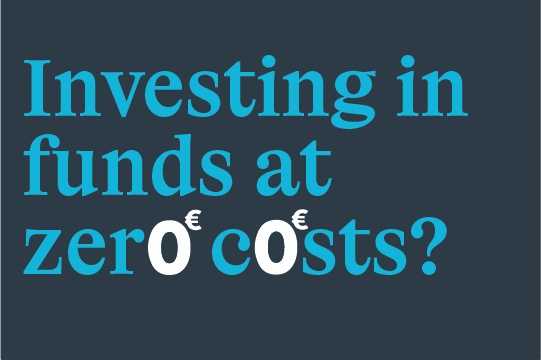How much can you borrow for a home?
Keytrade Bank
keytradebank.be
February 02, 2024
3 minutes to read
Your own home or a holiday home in the sun. Before your dream becomes a reality, there is a lot of admin for you to do first. A crucial factor is being able to raise sufficient funds. Whether you have already put some savings aside or are getting some help from your parents, there's still a good chance you'll need additional financing and will have to apply for a mortgage. The amount of money the bank will lend you depends on a range of factors, which are analysed together to determine your borrowing capacity.
> Want to run a free simulation? Get started straight away and find out how much you could borrow in less than two minutes.
The amount you can borrow primarily depends on the factors set out below.
Your financial situation and ability to repay
When a bank is deciding whether to grant you a mortgage loan or not, the bank is sure to want sufficient guarantees that you will be able to repay the amount you're borrowing. This means the bank will start by looking at your income. You should answer any questions the bank may have truthfully and in full.
Naturally, your salary as an employee or income as a self-employed person is key here. However, things such as meal vouchers, holiday pay, a company car, year-end bonuses , rental income or a second job will also be taken into account. A child benefit received under the Groeipakket will not be considered in the calculations.
Your status also plays a role. If you have only been self-employed for a year, for example, the bank will take a more cautious approach than if you have been a civil servant for ten years. In other words, the more stable and predictable your income, the better. Your family composition is also an important factor. If you submit a joint application for a mortgage, the bank will look at the income of all applicants together. This can significantly increase your borrowing capacity.

The bank will also check whether you have any outstanding loans or regular outgoings (such as child maintenance) and look into your credit history. The bank can search for this information in the Individual Credit Register (ICR). As a rule of thumb, you can assume your monthly repayments will amount to around a third of your net income. Assuming it will be around a third of your income is considered a safe buffer. The higher your income, the more flexible the bank will be when looking at the ratio between the repayment amounts and the percentage of your income.
The value of the property
The bank also looks at the loan-to-value ratio, i.e. the ratio between the value of the property and the loan amount you wish to apply for. In some cases, the bank will have a real estate expert carry out a valuation of the property. The maximum amount you could borrow may therefore depend on the expert's valuation, too. A property's EPC score can also affect your borrowing capacity.
Recommendations provided by the National Bank of Belgium
The more stable, more regular and higher your income, the more you will be able to borrow. However, this is not the only thing you should bear in mind. Banks also have their own credit rules on the amount of mortgage loans they may grant. This means the costs of borrowing you'll be responsible for will vary from bank to bank. What's more, the National Bank of Belgium (NBB) published recommendations for the entire banking sector a few years ago. These recommendations (note that they are not obligations) set out that you may borrow up to 90% of the value of the property. Looking at it another way, that also means you need to have a 10% deposit, plus additional funds for notary fees, other costs and registration fees. However, there are some exceptions to the NBB's recommendations:
• For first-time buyers: A bank may finance more than 90% of the value in 35% of loans, and more than 100% of the value for 5% of the loans in this category. • For those wishing to buy a second home: A bank may provide between 90% and 100% of the purchase price for 20% of these loans. • For those wishing to purchase a buy-to-let property, you are expected to put in 20%, although the banks are allowed to request a personal contribution of 10% in 10% of loans in this category.
Outside of these recommendations, loans are rarely granted for more than 100% of the purchase price. This means that in practice, the chances of you being able to borrow more than the property's purchase price are slim. It's worth noting that a bank will usually require a deposit that is sufficiently high, and usually more than 10%, too. It goes without saying that the larger your deposit, the better. These days, a 20% deposit has become the norm.
Want to apply for a mortgage loan easily and online?
Other articles that might interest you
![blogHeader-taxeRent]()
Rental income and taxes: what every landlord should know
![iPad]()
Monthly video 2025
![blog-InvestingFor]()
A beginner's guide to buying shares in five steps
![blogHeader-Tesla]()
Is Elon Musk about to crash Tesla shares?
![blogHeader-RIP]()
Your family member dies: how to manage their banking
![GraphOfTheWeek]()
American optimism reversing: time to head for the exit?
![blogHeader-GeldLenen]()
Lending money to family or friends: do you have carte blanche?
![blogHeader-kostenAamkoo]()
What costs are involved in buying a home?
![Defensieaandelen]()
An investment guide to Europe's military resurgence
![blogHeader-EuropeseBank]()
Are European bank stocks experiencing a renaissance?
![blogHeader-Aristo]()
Dividend aristocrats: a good beginner investment strategy?
![blogHeader-tax]()
Capital gains tax: who can escape and who will pay?
![iPad]()
Monthly video 2024
![blogHeader-SmallInvest]()
Investing when money is tight: being ambitious pays off!
![Blog-Header-Invest?]()
What is investing, and why is it an option for you?
![blog-donation-3]()
Married, cohabiting or in a non-cohabiting relationship: the impact on gifts and legacies
![blogHeader-TestamentScr]()
Writing your own will? Avoid these 10 mistakes
![blog-zorgvolmacht]()
12 questions and answers about a lasting power of attorney
![blog-inheritanceT]()
What if you are unable to pay the inheritance tax?
![blogHeader-donation]()
Want to fit in a gift before the end of the year and avoid paying gift tax?
![blogHeader-Trap]()
What you need to know before you start dividend investing
![pension pilars]()
Start growing your pension sooner rather than later
![blogHeader-MonthlySavin]()
What monthly pension savings for a maximum return?
![blogHeader-Lifetime]()
Lifetime pension savings: the sooner you begin, the more you rake in
![blog-DatingApp1]()
What if pension savings were like a dating app?
![blogHeader-mythes]()
Myth busters: 5 myths vs. facts about pension savings
![blogHeader-Pensionsav]()
Pension savings: save the grey hair for later
![Woman lying down in a hamac on a terrace]()
Passive investing: less effort for a better return
![blogHeader-retiredVersi]()
What would the retired version of you say to yourself?
![blogHeader-renteloos]()
Which loan is the best fit for your renovation project?
![blogHeader-1KeerBeleg]()
Lump-sum investing vs cost averaging: which offers the highest return?
![blog-whenInvest]()
When should you start investing? Seven potential key moments in your life
![Newspaper with ETF's circled in red, a red pen and a magnifying glass on top]()
What is a tracker and how do you choose the right one?
![blog-EpargeEnfant]()
How can you teach your child to save? 12 tips
![blog-header-pocketMoney]()
Why a child deserves pocket money
![blogHeader-financial in]()
Are there shortcuts to becoming financially independent?
![Blog-header-sleepingAccount]()
Do you have a dormant account? This is how you can check!
World Cleanup Day
![blogHeader-Password]()
Have a password manager on your cybersecurity checklist yet?
![Fishing per post]()
Scam letters are back (even though they never really went away)
![blog-spaargeld]()
Guide: how much you need in savings
![Active ETF]()
Actively managed ETFs: the best of both worlds?
![blogHeader-InvestFood]()
6 reasons to invest in food
![blog-ZonderGeldzo]()
Checklist: travel without any money worries
![sharing-data 1153889713]()
Take a moment to read this before sharing your data
![belgian-shares 1908487531]()
Investing in Belgian shares: the dangers of too many domestic securities
![untaxed-side-jobs 1913883895]()
Untaxed side jobs: what is allowed and what is not (any more)?
![pay-favourite 1835827360]()
Investors, never pay too much for your favourite share!
![IT]()
Who's who at Keytrade Bank? Who answers the phone when you call us?
![IT]()
Who's Who? Visiting IT
![Man and woman embracing with a key in hand]()
Buying real estate together? Consider a rights of survivorship clause
![blog renovationLoan]()
Taking out a loan for energy-saving renovations: what are your options?
![house-flipping 330509387]()
House flipping: is it worthwhile?
![friends-cheaper-travel 1680186190]()
What your friends forgot to tell you about cheaper travel
Investing in football shares: what's the score?
![blogHeader-SpaarrentenV]()
Comparing savings accounts: where do you put your money?
![blogHeader-ValseVacatur]()
Watch out for recruitment scams
![Graph of the week]()
Europe is no longer falling behind!
![blogHeader-SparenVoorKi]()
How can I invest or save better for my child?
![blogHeader-Online reken]()
Opening an online bank account: what is holding you back?
![trackers capi-distri]()
The difference between distribution and accumulation for funds or trackers
![blogHeader-Vastgoedaand]()
Property shares: ripe for a comeback?
![Graph of the week]()
Is joining the BEL20 actually good for you?
![blog-tweedeLening]()
Borrowing for a second home: what are your options?
![blog-romanceScamm]()
Online dating scams: tips to protect yourself
![Graph of the week]()
Can we still say "Magnificent Seven"? Or should it be "2 Unlimited "?
![blogHeader-ZelfOfLaten]()
Invest yourself or have someone do it for you: do you have to choose?
![tell-tax-man 1044303100]()
What do you have to tell the tax man about your money and investments?
![iPad]()
Monthly video 2023
![shopping-online 1469785070]()
Shopping online: 7 tips and points to consider
![Image article small caps]()
Small company shares with big opportunities?
![Picture article gold]()
Golden days? Why to invest in gold (or not)
![roerende voorheffing]()
Exemption from withholding tax on dividends
![Seasons greetings]()
Looking back on 2023
![Photo article challenges stock investor]()
Will bonds beat shares in 2024?
![Watch out, danger's about]()
Watch out, danger's about
![blog-DigitalHerit]()
Will AI replace human investment advisers?
![extra-softkey]()
Don't forget to create an extra access!
![blog-short]()
Shorting: what is it and how does it work?
![blog-goldenRules]()
The 10 principles of stock market success
![blog energyInvestment]()
How to invest in the energy transition?
![qd code fraude]()
Read this before you scan another QR code
![padel header]()
Good positional play is important!
![free-credit-cards]()
Keytrade Bank has one of the few free credit cards on the Belgian market
![hacker cat]()
How to put phishers out of a job
![inde2]()
Is India the new China?
![KNEWS 2307 Padel]()
Padel has got a new doubles partner with Keytrade Bank
![Geert Van Herck]()
Investors are not afraid of risks! Or not yet?
![nervous-stock-market-200days-moving-average 534464629]()
Get ready for the last quarter!
![Biodiversity]()
Investing in biodiversity: can Wall Street save the rainforest?
![blog-DigitalHerit]()
Don't forget to make arrangements for your digital estate
Investing in AI: hype or a ticket to the future?
![blog-savingForSak]()
Saving for the sake of saving? Or with a goal in mind?
![blog-PrepareYours]()
How do you prepare financially for a longer life?
![blog-Recession]()
Handling recessions: a manual
![blog-sellInMayAndGoAway]()
Sell in May? Is it really such a good idea?
![myth-sustainable 1059639044]()
Make an impact with your Keyprivate
![Mortgage Wallonia]()
New reductions in stamp duty for home buyers
![diversification]()
How much diversification is enough for your portfolio?
![KID eurosign]()
From KIID to KID: new rules, better investment decisions
![intelligent mobility]()
Which investment opportunities are available on the road to smart mobility?
![blog endOfAmericanHegemony]()
Is the end nigh for American dominance?
![blog healthcareInvestment]()
A vitamin shot for your investments
![blog waterInvestment]()
Does water earn a place in your portfolio?
![Bonds]()
Bonds to rise in 2023?
![PEB]()
Don't forget to include your EPC in your credit application
![iPad]()
Monthly video 2022
![keytrade-nature-trail 474489556]()
A Keytrade Bank Nature Trail? Yes, please.
![equity-investors-economic-data 1891162513]()
What is technical analysis and how does it work?
![Product Owner of our Data Department, Damien Hegarty]()
Who's who at Keytrade Bank? Data first
![Funds for free]()
Less costs? Yes, please.
![situation-russia-ukraine 1924764779]()
The situation following the Russian invasion of Ukraine
![something-new-investment-world]()
There's something new in the air in the investment world!
![thematic-funds 530010547]()
6 points to consider for thematic investing
![flanders-renovation 462881602]()
Property transfer tax – how much is this tax?
![monetary-policies-brake-stock-market-upturn]()
Is tighter monetary policy acting as a brake on the stock market upturn?
![donate-to-charity 1854854632]()
How can you donate or leave a legacy to a charity?
![close-possible-staff 69329]()
As close as possible to staff
![keytrade-nature-trail 474489556]()
A Keytrade Bank Nature Trail? Yes, please.
![esg-rating 1169454484]()
How do you find out what a company’s ESG rating is?
![esg-alphabet]()
ESG's alphabet
![ferrari-syndrome 1945800565]()
How much additional income are you allowed to earn as a pensioner?
![invest-success 1033103851]()
All in our fund market at the same price
![impact-luck 1085827403]()
How to invest if you're on a tight budget
![offer-property 1982828150]()
No extra costs ...
![700k-given 1577327479]()
10 ways to save money with apps
![Geert Van Herck]()
Monthly video 2021
![inflation 2023622432]()
Hate budgeting? This is your guide to budgeting
![investment-podcasts 1433456570]()
Podcasts about money and investments (part one)
![global-world-index 289143614]()
Can countries go bankrupt?
![inflation-commodities 1046709259]()
Inflation? Grab some commodities for your portfolio!
![stay-at-hotel 1676771632]()
Enjoy your stay at the hotel and pay less
![choose-trackers 1382662748]()
How to choose a tracker (ETF)
![safe-investing 268438862]()
Gold, cash and government bonds: how safe are safe havens?
![baby-on-way 1095110102]()
Baby on the way? Make sure your finances are ready for it, too
![protect-capital-divorce 1644904228]()
How to protect your capital in the event of a divorce
![buffet-bezos-musk-p-KCm6xB9I-unsplash]()
The halo effect: why we are buying the shares of Buffett, Bezos and Musk
![investing-for-your-child 1340966087]()
Why investing for your child is a good idea
![timing-is-everything 390959932]()
Timing is everything: how to choose the right time to enter the stock exchange?
![iPad]()
La technologie préserve les investisseurs contre l'utopie
![funadamental-analysis 1555072109]()
What is fundamental analysis, and how does it work?
![include-grandchildren-inheritance 1009930174]()
How to include your grandchildren in your inheritance planning: 8 questions and answers
![micro-caps 516415369]()
Why (not) invest in micro-caps?
![treacherous-stock-market 1033103887]()
The treacherous stock market
![talking-family-legacy 1057090253]()
Talking to your family about legacy: how to get started
![stock-vs-brick 1990193171]()
Stock market versus bricks and mortar: 1-0
![second-residence 2015005337]()
Buying a second residence: with savings, investments or a loan?
![math-stock-market 68612446]()
Maths on the stock market
![lazy-marathon 1620359050]()
The lazy marathon investor
![impact-luck 1085827403]()
The impact of luck on investments
![equity-investors-economic-data 1891162513]()
Equity investors look beyond gloomy economic data
![10-rules-lifelong-success 1761072161]()
Ten basic rules for lifelong success on the stock market
![share-bank-card 1080072473]()
Share everything with peace of mind. Except your bank cards.
![economy-dip 1912291450]()
Any dip in the global economy appears to just a passing blip!
![seven-myths 1756375427]()
Seven investment myths
![emerging 1050235859]()
Emerging countries are lagging behind!
![first-aid-admin 2082725440]()
First Aid for Your (Financial) Administration
![coronablog 1670847745]()
Coronavirus blog Geert Van Herck: Property once again fails to deliver diversification bonus
![gift-inheritance 1661226916]()
Gift or inheritance: which is the most tax-efficient?
![browser-card 1186332706]()
Saving your payment card details in your browser: yay or nay?
![car-to-bike 1250798269]()
Swapping your car for a bike: how much money could you save?
![700k-given 1577327479]()
No extra costs. Yet 700,000 euros gladly given to you, our customers!
![china-dollar 1818989204]()
Can China make the dollar crash?
![ferrari-syndrome 1945800565]()
Afraid of causing Ferrari or hammock syndrome? This is how you can make a gift and stay in control
![us-dominance 1664904235]()
US stock market dominance not coming to an end yet!
![investment-podcasts 1433456570]()
Podcasts about money and investments (part two)
![mining-sector 1741881131]()
Anxious about inflation? Have you ever considered the mining sector?
![msci-emerging 129310280]()
Will the MSCI Emerging Markets index become the next big thing?
![inflation-savings 1051141721]()
What does higher inflation do to your savings and investments?
![invest-success 1033103851]()
How can you invest successfully?
![share-suits-you 1134551189]()
Which shares suit you?
